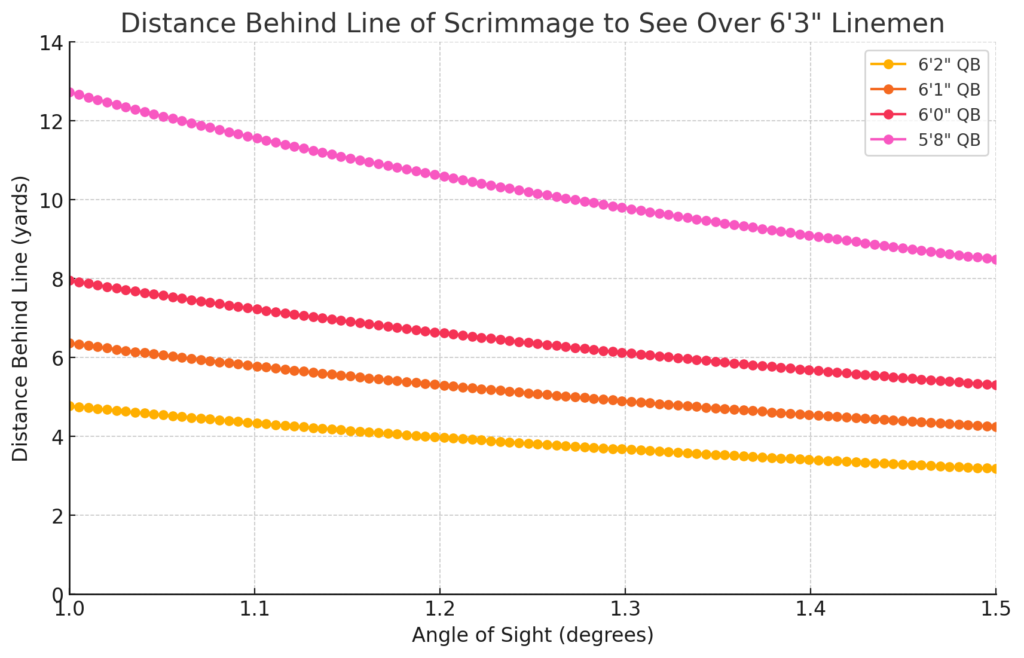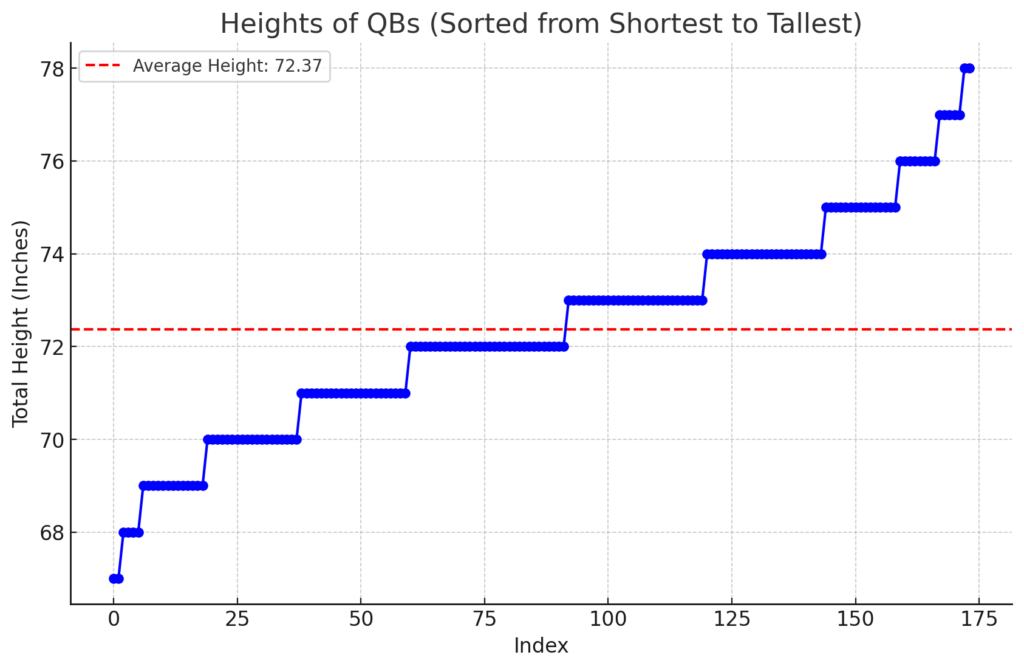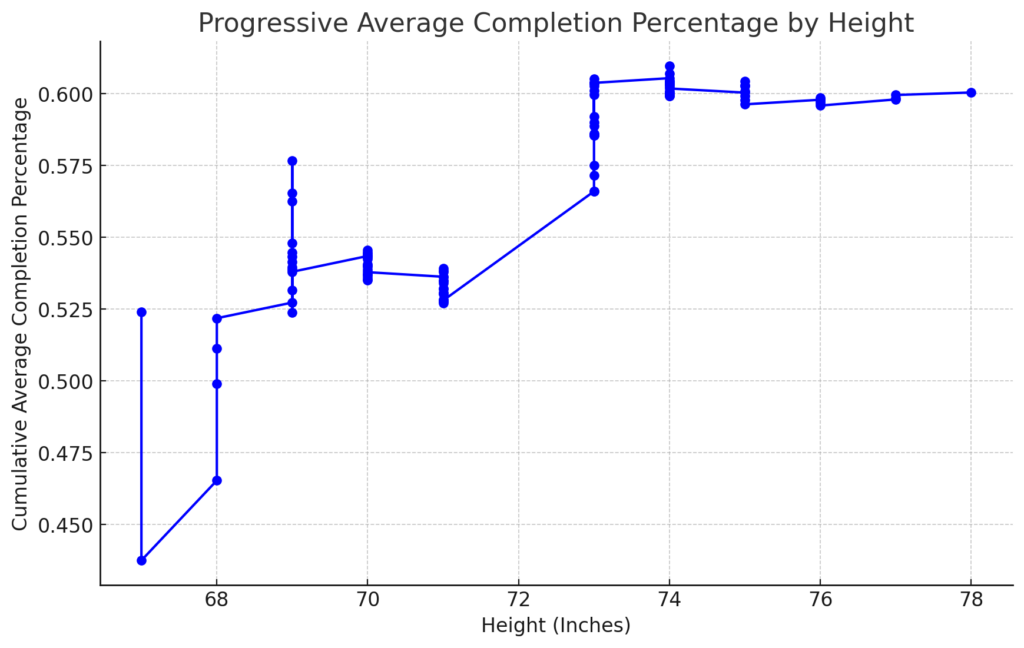
This week, we received a great question on Twitter: “You guys talk about height and weight a lot. But just curious, why are college quarterbacks supposed to be at least 6’1″?”
This is a question that often comes up when discussing the physical attributes of successful quarterbacks, especially in college football. So let’s break it down.
The Role of Height in a QB’s Success
Height is more than just a number on a roster. For quarterbacks, height plays a critical role in their ability to see the field, make quick decisions, and execute plays. The average height of D1 offensive linemen is usually between 6’3″ and 6’5″. When a quarterback is too short, their line of sight is directly impacted—they struggle to see over the linemen, which can limit their ability to spot open receivers or anticipate defensive movements. However, there is a caveat.
The Caveat: The diminishing role of height with regard to throwing
In today’s game, the impact of a quarterback’s height is diminishing when it comes to throwing over linemen. Modern QBs have become increasingly adept at adjusting their arm angles, allowing them to find passing lanes with ease regardless of height. This ability to change the trajectory and angle of their throws makes it less critical to be able to throw directly over linemen.
Why it still does matter though
Understanding the Tangent and Angle Concept
When we talk about a quarterback needing to see over their linemen, imagine the QB’s eyes as a line that extends out from their face, going over the heads of the linemen in front of them. For the quarterback to see over the linemen, that line needs to be angled slightly upwards—just enough to clear the top of the linemen’s heads and let the QB see what’s happening on the field.
This upward tilt of the line is what we call the angle of sight. The angle of sight can be really small, like 2 degrees or less, but it makes a big difference in how far back the quarterback has to stand to see over the linemen.
What is Tangent?
In geometry, the tangent (often written as “tan”) is a function that relates the angle of sight to how far back the QB needs to stand. It’s a way of measuring how steep that line from the QB’s eyes to the top of the linemen’s heads is.
- Tangent of an angle = (How much higher the linemen are than the QB’s eyes) / (How far back the QB stands)
So, if the linemen are much taller than the QB, the QB has to stand further back to make that angle small enough to see over them.
How Does This Work for a QB?
Let’s say you’re a QB who’s 5’8″ and your linemen are 6’3″. There’s a 7-inch difference between your eyes and the top of the linemen’s heads. To see over them, you’d have to tilt your line of sight upwards at a certain angle. The steeper that angle, the less far back you need to stand to clear the linemen’s heads.
But here’s the catch: a small angle which is what is needed for most short to mid range throws (like 1-2 degrees) means you have to stand much further back to achieve that clearance because the line from your eyes takes longer to climb over the linemen. When seeing over linemen, we don’t want to be looking at the sky, since there are no receivers there aside from our dearly departed WR brethren so that angle needs to be as small as possible.
What does this look like in practice? Just look at the chart at the top of the page. It is no coincidence that at 1.5 degrees a 6’1 QB at EXACTLY shotgun depth can see over the average lineman but a 6’0 QB cannot.
Is this a hard and fast rule? Absolutely not. But its not arbitrary either. How tall are Colorado Prep QBs? Here is a chart of everyone that completed a pass last year. Average height? Between 6’0 and 6’1.

Impact on completion percentages for all Colorado QBs who threw for at least 50 yards:


